 As children continue their preschool years, they learn many new things and develop their own opinions and ideas. During this time, people inside and outside of the home may greatly influence them. As preschoolers continue to learn and grow, caregivers can take many steps to guide their children in a healthy and positive direction. This 4-page fact sheet was written by Kate Bennet, Gail Kauwell, and Karla P. Shelnutt, and published by the UF Department of Family Youth and Community Sciences, April 2014.
As children continue their preschool years, they learn many new things and develop their own opinions and ideas. During this time, people inside and outside of the home may greatly influence them. As preschoolers continue to learn and grow, caregivers can take many steps to guide their children in a healthy and positive direction. This 4-page fact sheet was written by Kate Bennet, Gail Kauwell, and Karla P. Shelnutt, and published by the UF Department of Family Youth and Community Sciences, April 2014.
http://edis.ifas.ufl.edu/fy1398
Category: Families & Consumers
Como hacer una trampa interceptora de chinches de cama de articulos comunes del hogar.
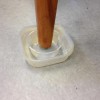 Las chinches de cama se han convertido en un problema de plagas cada vez más común en los Estados Unidos. Se han encontrado en muchos lugares diferentes en donde vive la gente, desde escuelas y restaurantes a consultorios médicos y salas de cine, pero las peores infestaciones son por lo general en lugares donde vive la gente, descansan y duermen como en casas, pisos, apartamentos, hoteles y refugios para desamparados. Las chinches de cama son más comunes en lugares como alrededor de piezas de mobiliario en donde la gente se sienta o acuesta- camas, sillas y sofás. Para descubrir si las chiches están presentes en una habitación o un mueble, el dispositivo llamado trampa interceptora de chinches puede ser útil. Las trampas interceptoras atrapan y recogen las chinches de cama cuando tratan de viajar entre sus huéspedes humanos y sus escondites. Las trampas interceptoras de chinches de cama son fácilmente hechas de artículos del hogar y recipientes de plástico desechables. This 4-page fact sheet was written by Benjamin A. Hottel, Rebecca W. Baldwin, Roberto M. Pereira, and Philip G. Koehler, and published by the UF Department of Entomology and Nematology, February 2014.
Las chinches de cama se han convertido en un problema de plagas cada vez más común en los Estados Unidos. Se han encontrado en muchos lugares diferentes en donde vive la gente, desde escuelas y restaurantes a consultorios médicos y salas de cine, pero las peores infestaciones son por lo general en lugares donde vive la gente, descansan y duermen como en casas, pisos, apartamentos, hoteles y refugios para desamparados. Las chinches de cama son más comunes en lugares como alrededor de piezas de mobiliario en donde la gente se sienta o acuesta- camas, sillas y sofás. Para descubrir si las chiches están presentes en una habitación o un mueble, el dispositivo llamado trampa interceptora de chinches puede ser útil. Las trampas interceptoras atrapan y recogen las chinches de cama cuando tratan de viajar entre sus huéspedes humanos y sus escondites. Las trampas interceptoras de chinches de cama son fácilmente hechas de artículos del hogar y recipientes de plástico desechables. This 4-page fact sheet was written by Benjamin A. Hottel, Rebecca W. Baldwin, Roberto M. Pereira, and Philip G. Koehler, and published by the UF Department of Entomology and Nematology, February 2014.
http://edis.ifas.ufl.edu/in1026
Preparacion de alimentos en pure
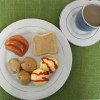 Un alimento en puré es un alimento que ha sido licuado, mesclado o procesado hasta crear una textura uniforme y suave. Los ejemplos de alimentos con una consistencia en puré incluyen la salsa de manzana, relleno de tarta de calabaza y humus. Los alimentos en puré pueden ser necesarios para personas con problemas al tragar y/o masticar. Para aquellos que requieren una dieta basada de purés, es muy importante proveer una variedad de alimentos. Casi todas las comidas se pueden preparar como puré. Sin embargo, algunas comidas pueden ser más aceptadas que otras. This 4-page fact sheet was written by Wendy J. Dahl y Jamila R. Lepore, and published by the UF Department of Food Science and Human Nutrition, February 2014.
Un alimento en puré es un alimento que ha sido licuado, mesclado o procesado hasta crear una textura uniforme y suave. Los ejemplos de alimentos con una consistencia en puré incluyen la salsa de manzana, relleno de tarta de calabaza y humus. Los alimentos en puré pueden ser necesarios para personas con problemas al tragar y/o masticar. Para aquellos que requieren una dieta basada de purés, es muy importante proveer una variedad de alimentos. Casi todas las comidas se pueden preparar como puré. Sin embargo, algunas comidas pueden ser más aceptadas que otras. This 4-page fact sheet was written by Wendy J. Dahl y Jamila R. Lepore, and published by the UF Department of Food Science and Human Nutrition, February 2014.
http://edis.ifas.ufl.edu/fs246
Alimentos en pure: Los pures altos en proteina
 La proteína es un nutriente esencial que nuestro cuerpo necesita para funcionar correctamente y de manera eficiente. Cada célula, tejido y órgano del cuerpo necesita una fuente constante de proteínas para mantener una buena salud y un buen funcionamiento. Para que estos procesos metabólicos ocurran, las proteínas se descomponen para que el cuerpo las pueda usar y se reemplazan por los alimentos que comemos. This 5-page fact sheet was written by Jamila R. Lepore y Wendy J. Dahl, and published by the UF Department of Food Science and Human Nutrition, February 2014.
La proteína es un nutriente esencial que nuestro cuerpo necesita para funcionar correctamente y de manera eficiente. Cada célula, tejido y órgano del cuerpo necesita una fuente constante de proteínas para mantener una buena salud y un buen funcionamiento. Para que estos procesos metabólicos ocurran, las proteínas se descomponen para que el cuerpo las pueda usar y se reemplazan por los alimentos que comemos. This 5-page fact sheet was written by Jamila R. Lepore y Wendy J. Dahl, and published by the UF Department of Food Science and Human Nutrition, February 2014.
http://edis.ifas.ufl.edu/fs245
Facts about Antioxidants
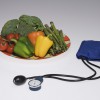 Our bodies are made up of cells. Chemical reactions necessary for life are constantly occurring inside our cells, and sometimes they create free radicals — highly reactive molecules that can initiate damaging chain reactions known as oxidative stress.
Our bodies are made up of cells. Chemical reactions necessary for life are constantly occurring inside our cells, and sometimes they create free radicals — highly reactive molecules that can initiate damaging chain reactions known as oxidative stress.
Antioxidants can inactivate free radicals and protect our cells from oxidative stress and the damage it causes. Antioxidants also can help our immune system defend against bacteria, fungi, viruses, and some cancers. The body produces some of its own antioxidants, but eating a plant-based diet increases the level of antioxidants in our bodies. This 3-page fact sheet was written by Kaitlin G. Clark and Wendy J. Dahl, and published by the UF Department of Food Science and Human Nutrition, February 2014.
http://edis.ifas.ufl.edu/fs242
Facts about Carbohydrate
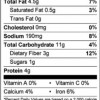 Carbohydrate, fat, and protein are the three nutrients that provide energy (calories). However, carbohydrate from starch and sugars is our main and most important source of energy. During digestion, starch is broken down to sugar (glucose). Carbohydrate in the form of glucose provides energy to cells, tissues, and organs to carry out daily activities. Some glucose is stored in the liver and muscle cells for later use when required. Children need carbohydrate for growth, and adults need carbohydrate to maintain their weight. This 3-page fact sheet was written by Nancy J. Gal, Amanda L. Ford, and Wendy J. Dahl, and published by the UF Department of Food Science and Human Nutrition, February 2014.
Carbohydrate, fat, and protein are the three nutrients that provide energy (calories). However, carbohydrate from starch and sugars is our main and most important source of energy. During digestion, starch is broken down to sugar (glucose). Carbohydrate in the form of glucose provides energy to cells, tissues, and organs to carry out daily activities. Some glucose is stored in the liver and muscle cells for later use when required. Children need carbohydrate for growth, and adults need carbohydrate to maintain their weight. This 3-page fact sheet was written by Nancy J. Gal, Amanda L. Ford, and Wendy J. Dahl, and published by the UF Department of Food Science and Human Nutrition, February 2014.
http://edis.ifas.ufl.edu/fs243
Facts about Flavonoids
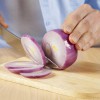 Flavonoids are organic compounds that occur naturally in plants. More than five thousand flavonoid compounds exist in nature, but those found in foods fall into six major categories: flavonols, anthocyanidins, isoflavones, flavan-3-ols, flavones, and flavonones. The compounds in these categories are of interest because of their potential health benefits. This 4-page fact sheet was written by Inbar Schapsis and Wendy J. Dahl, and published by the UF Department of Food Science and Human Nutrition, February 2014.
Flavonoids are organic compounds that occur naturally in plants. More than five thousand flavonoid compounds exist in nature, but those found in foods fall into six major categories: flavonols, anthocyanidins, isoflavones, flavan-3-ols, flavones, and flavonones. The compounds in these categories are of interest because of their potential health benefits. This 4-page fact sheet was written by Inbar Schapsis and Wendy J. Dahl, and published by the UF Department of Food Science and Human Nutrition, February 2014.
http://edis.ifas.ufl.edu/fs244
Five Steps to Seasonal Savings
 When the holiday season is over you may find yourself saying: “Why did I spend all of that money? Why did I wait until the last minute to shop? I don’t even want to think about how long it will take to pay off the credit cards. I hope I didn’t take too much money out of the ATM. Did I buy my mom the same gift twice? I should have had a plan.” By following a few simple steps, you can end this post-holiday hangover. This 5-page fact sheet was written by Ricki McWilliams, Julie Pigott-Dillard, and Michael Gutter, and published by the UF Department of Family Youth and Community Sciences, January 2014.
When the holiday season is over you may find yourself saying: “Why did I spend all of that money? Why did I wait until the last minute to shop? I don’t even want to think about how long it will take to pay off the credit cards. I hope I didn’t take too much money out of the ATM. Did I buy my mom the same gift twice? I should have had a plan.” By following a few simple steps, you can end this post-holiday hangover. This 5-page fact sheet was written by Ricki McWilliams, Julie Pigott-Dillard, and Michael Gutter, and published by the UF Department of Family Youth and Community Sciences, January 2014.
http://edis.ifas.ufl.edu/fy1405
Los alimentos hechos en pure, las bebidas espesadas y las necesidades de agua
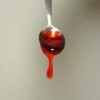 El consumo adecuado del agua puede ser un problema para algunas personas con problemas de tragar, especialmente para aquellos que tienen dificultad para tragar los líquidos ligeros. Los ejemplos de líquidos ligeros son el agua, la leche, el café, el té, y la mayoría de los jugos de frutas. This 4-page fact sheet was written by Wendy J. Dahl, and published by the UF Department of Food Science and Human Nutrition, January 2014.
El consumo adecuado del agua puede ser un problema para algunas personas con problemas de tragar, especialmente para aquellos que tienen dificultad para tragar los líquidos ligeros. Los ejemplos de líquidos ligeros son el agua, la leche, el café, el té, y la mayoría de los jugos de frutas. This 4-page fact sheet was written by Wendy J. Dahl, and published by the UF Department of Food Science and Human Nutrition, January 2014.
http://edis.ifas.ufl.edu/fs241
Frijoles, guisantes, y lentejas: Beneficios de la Salud
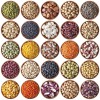 Los frijoles, los guisantes y las lentejas son conocidos colectivamente como legumbres. Los frijoles son una gran fuente de muchos nutrientes, incluyendo proteína, fibra y potasio. This 2-page fact sheet was written by Lakshmi Mahan, Lauren Foster, and Wendy J. Dahl, and published by the UF Department of Food Science and Human Nutrition, January 2014.
Los frijoles, los guisantes y las lentejas son conocidos colectivamente como legumbres. Los frijoles son una gran fuente de muchos nutrientes, incluyendo proteína, fibra y potasio. This 2-page fact sheet was written by Lakshmi Mahan, Lauren Foster, and Wendy J. Dahl, and published by the UF Department of Food Science and Human Nutrition, January 2014.
http://edis.ifas.ufl.edu/fs240
Facts about Vitamin D
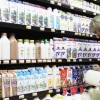 Vitamin D is needed for normal absorption of calcium and phosphorus. It helps put these minerals into bones and teeth. This makes bones stronger and reduces risk for bone fractures. Vitamin D also helps keep the immune system functioning normally, so our bodies can resist some types of disease. This 2-page fact sheet was written by Linda B. Bobroff and Isabel Valentín-Oquendo, and published by the UF Department of Family Youth and Community Sciences, February 2014.
Vitamin D is needed for normal absorption of calcium and phosphorus. It helps put these minerals into bones and teeth. This makes bones stronger and reduces risk for bone fractures. Vitamin D also helps keep the immune system functioning normally, so our bodies can resist some types of disease. This 2-page fact sheet was written by Linda B. Bobroff and Isabel Valentín-Oquendo, and published by the UF Department of Family Youth and Community Sciences, February 2014.
http://edis.ifas.ufl.edu/fy207
Los alimentos en pure y la fibra
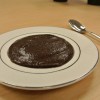 La fibra es importante para la buena salud. El consumo inadecuado de fibra puede conducir al estreñimiento y a otros problemas gastrointestinales. Las dietas altas en fibra pueden ayudar a reducir el colesterol y la glucosa en la sangre, lo que reduce el riesgo de las enfermedades del corazón. Aunque la fibra se encuentra en todos los alimentos de origen vegetal como las frutas, los vegetales, los granos, las nueces y las semillas, la mayoría de las personas no consumen lo suficiente.The English version of this document is FSHN12-16/FS209 Puréed Foods and Fiber. This 4-page fact sheet was written by Wendy J. Dahl, and published by the UF Department of Food Science and Human Nutrition, December 2013.
La fibra es importante para la buena salud. El consumo inadecuado de fibra puede conducir al estreñimiento y a otros problemas gastrointestinales. Las dietas altas en fibra pueden ayudar a reducir el colesterol y la glucosa en la sangre, lo que reduce el riesgo de las enfermedades del corazón. Aunque la fibra se encuentra en todos los alimentos de origen vegetal como las frutas, los vegetales, los granos, las nueces y las semillas, la mayoría de las personas no consumen lo suficiente.The English version of this document is FSHN12-16/FS209 Puréed Foods and Fiber. This 4-page fact sheet was written by Wendy J. Dahl, and published by the UF Department of Food Science and Human Nutrition, December 2013.
http://edis.ifas.ufl.edu/fs238
Food Safety: High Risk Foods Crossword
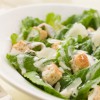 Some foods are more likely to cause foodborne illness than others. Unpasteurized milk or juices are not safe to consume. Uncooked foods that are made with raw or undercooked eggs are especially risky. This 2-page fact sheet was written by Linda B. Bobroff and Jennifer Hillan, and published by the UF Department of Family Youth and Community Sciences, February 2014.
Some foods are more likely to cause foodborne illness than others. Unpasteurized milk or juices are not safe to consume. Uncooked foods that are made with raw or undercooked eggs are especially risky. This 2-page fact sheet was written by Linda B. Bobroff and Jennifer Hillan, and published by the UF Department of Family Youth and Community Sciences, February 2014.
http://edis.ifas.ufl.edu/fy927
Facts about Fructose
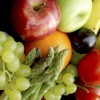 Fructose is a simple sugar found in many foods. Common table sugar is made of equal amounts fructose and glucose. Similarly, high-fructose corn syrup, commonly used to sweeten foods, contains a mixture of fructose and glucose. Fructose is sweeter than glucose, and for this reason it has been used in many sweetened foods. This 2-page fact sheet was written by Wendy Dahl, Lauren Foster, and Russel Owen, and published by the UF Department of Food Science and Human Nutrition, June 2013.
Fructose is a simple sugar found in many foods. Common table sugar is made of equal amounts fructose and glucose. Similarly, high-fructose corn syrup, commonly used to sweeten foods, contains a mixture of fructose and glucose. Fructose is sweeter than glucose, and for this reason it has been used in many sweetened foods. This 2-page fact sheet was written by Wendy Dahl, Lauren Foster, and Russel Owen, and published by the UF Department of Food Science and Human Nutrition, June 2013.
http://edis.ifas.ufl.edu/fs148
Facts about Phosphorus
 Phosphorus is a mineral found in every cell of the body, usually in the form of phosphate. It is the second most abundant mineral in the body after calcium. About 85% of phosphorus is stored in the bones and teeth. It is important for forming bones and teeth, as well as repairing bones. This 3-page fact sheet was written by Nancy J. Gal and Wendy J. Dahl, and published by the UF Department of Food Science and Human Nutrition, January 2014.
Phosphorus is a mineral found in every cell of the body, usually in the form of phosphate. It is the second most abundant mineral in the body after calcium. About 85% of phosphorus is stored in the bones and teeth. It is important for forming bones and teeth, as well as repairing bones. This 3-page fact sheet was written by Nancy J. Gal and Wendy J. Dahl, and published by the UF Department of Food Science and Human Nutrition, January 2014.
http://edis.ifas.ufl.edu/fs237
Being Smart about Gluten and Gluten-free Issues, Part 2: What Retailers and Consumers Need to Know about Gluten and Gluten-free Product Labeling
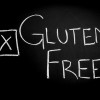 In 2011, gluten was recognized as having a specific link to celiac disease, and some consumers hoping to minimize the symptoms of celiac disease have opted to modify their diets. This is the second of a three-part series of publications called “Being Smart about Gluten and Gluten-Free Issues.” The purpose of this publication is to supply retailers and consumers with easy-to-understand information about labeling as related to gluten-free products. This 3-page fact sheet was written by Abigail Dicks, Amy Harder, and Amy Simonne, and published by the UF Department of Agricultural Education and Communication, September 2014.
In 2011, gluten was recognized as having a specific link to celiac disease, and some consumers hoping to minimize the symptoms of celiac disease have opted to modify their diets. This is the second of a three-part series of publications called “Being Smart about Gluten and Gluten-Free Issues.” The purpose of this publication is to supply retailers and consumers with easy-to-understand information about labeling as related to gluten-free products. This 3-page fact sheet was written by Abigail Dicks, Amy Harder, and Amy Simonne, and published by the UF Department of Agricultural Education and Communication, September 2014.
http://edis.ifas.ufl.edu/wc153
Safe Dishwashing Without an Automatic Dishwasher for Home, Community Events, and Outdoor Activities
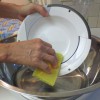 Most of us are accustomed to the ease and convenience of washing our dishes in an automatic dishwasher. At times, however, no dishwasher is available. This 4-page fact sheet teaches ways to safely wash or clean your dishes by hand, which may be necessary when your dishwasher is broken, you are outdoors, or you are working in a facility without a dishwasher. Written by Morgan Denhard, Amy Simonne, and Ricki McWilliams, and published by the UF Department of Family Youth and Community Sciences, December 2014.
Most of us are accustomed to the ease and convenience of washing our dishes in an automatic dishwasher. At times, however, no dishwasher is available. This 4-page fact sheet teaches ways to safely wash or clean your dishes by hand, which may be necessary when your dishwasher is broken, you are outdoors, or you are working in a facility without a dishwasher. Written by Morgan Denhard, Amy Simonne, and Ricki McWilliams, and published by the UF Department of Family Youth and Community Sciences, December 2014.
http://edis.ifas.ufl.edu/fy1403
Raising Healthy Children: Promoting a Positive Feeding Experience
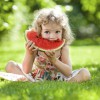 All parents have heard “I don’t like that!” or “I’m not hungry!” from their child at some point or another. It’s likely that your child will not like every food that is served, but that doesn’t mean mealtime can’t still be a pleasant experience for the family. Parents may think they have sole responsibility for their child’s food choices, but Ellyn Satter, a registered dietitian who specializes in feeding and eating, advises that young children also have responsibility in the eating process. If feeding your child is stressful, read this fact sheet to learn about the division of responsibility in feeding and how to make meal times more enjoyable for the whole family. This 3-page fact sheet was written by Tiffany N. Stodtko, Karla P. Shelnutt, and Gail P.A. Kauwell, and published by the UF Department of Family Youth and Community Sciences, December 2014.
All parents have heard “I don’t like that!” or “I’m not hungry!” from their child at some point or another. It’s likely that your child will not like every food that is served, but that doesn’t mean mealtime can’t still be a pleasant experience for the family. Parents may think they have sole responsibility for their child’s food choices, but Ellyn Satter, a registered dietitian who specializes in feeding and eating, advises that young children also have responsibility in the eating process. If feeding your child is stressful, read this fact sheet to learn about the division of responsibility in feeding and how to make meal times more enjoyable for the whole family. This 3-page fact sheet was written by Tiffany N. Stodtko, Karla P. Shelnutt, and Gail P.A. Kauwell, and published by the UF Department of Family Youth and Community Sciences, December 2014.
http://edis.ifas.ufl.edu/fy1397
Important Things to Know about Medicare series
 As an older adult citizen of the United States, it is important to understand the structure of Medicare and how it affects you. The information in this series is based on the most current data available and includes several changes with the implementation of the Affordable Care Act. This guide was also written using Florida guidelines when appropriate. Please bear in mind that your personal situation may vary from the examples in the series, and always contact your local Medicare representative for questions regarding your own circumstances.
As an older adult citizen of the United States, it is important to understand the structure of Medicare and how it affects you. The information in this series is based on the most current data available and includes several changes with the implementation of the Affordable Care Act. This guide was also written using Florida guidelines when appropriate. Please bear in mind that your personal situation may vary from the examples in the series, and always contact your local Medicare representative for questions regarding your own circumstances.
- Introduction and Overview
- Chapter One–Who Is Eligible for Medicare, and Do I Have To Sign Up for It?
- Chapter Two: Medicare Part A–Hospital Insurance
- Chapter Three: Medicare Part B–Medical Insurance
- Chapter Four–Medicare Part C – Medicare Advantage
- Chapter Five–Medicare Part D–Prescription Drug Coverage
- Chapter Six–“Medigap” Policies
- Chapter Seven–How does my other insurance work with Medicare? Who pays first?
- Chapter Eight–What if I need help paying my health care and prescription drug costs?
- Chapter Nine–How should I decide how I want to get my Medicare?
- Chapter Ten–Key Terms, Additional Resources, List of Handouts, and References
Written by Amanda Terminello and Martie Gillen, and published by the UF Department of Family Youth and Community Sciences, September 2013.
http://edis.ifas.ufl.edu/topic_series_important_things_to_know_about_medicare
How to Make a Bed Bug Interceptor Trap out of Common Household Items
 Bed bugs have become an increasingly common pest problem throughout the United States. To discover whether bed bugs are present in a room or a piece of furniture, you can make interceptor traps out of commonly found household items and disposable plastic containers. This 5-page fact sheet was written by Benjamin A. Hottel, Rebecca W. Baldwin, Roberto M. Pereira, and Philip G. Koehler, and published by the UF Department of Entomology and Nematology, January 2014.
Bed bugs have become an increasingly common pest problem throughout the United States. To discover whether bed bugs are present in a room or a piece of furniture, you can make interceptor traps out of commonly found household items and disposable plastic containers. This 5-page fact sheet was written by Benjamin A. Hottel, Rebecca W. Baldwin, Roberto M. Pereira, and Philip G. Koehler, and published by the UF Department of Entomology and Nematology, January 2014.
http://edis.ifas.ufl.edu/in1022